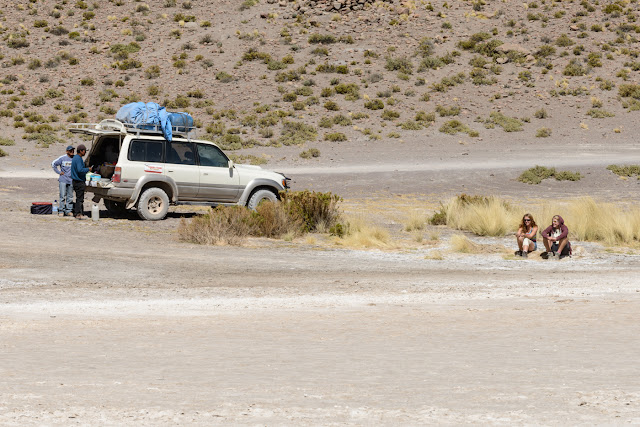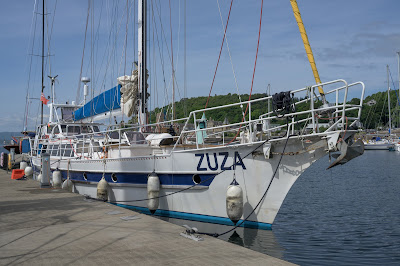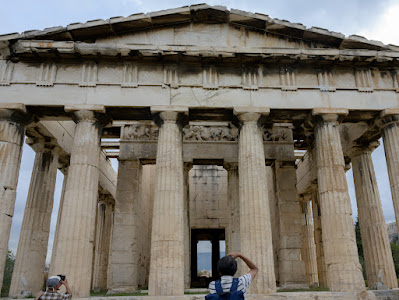1st May - Volcanos Lakes and Rocks in the Desert
On the second day of our Salt flat tour we got up after a night in the Salt Hotel near San Juan. The bed had a base of salt, but did have a mattress and we slept in our down sleeping bags as it got very cold. Breakfast was good and we had pancakes to fortify us for our 7.30 start.
The salt was now mixed with the sand and grit of the Salar de Chiguana. We were not that far out when we came across the railway line. Pauli asked us to walk across while he took the Land Cruiser across. I don't know if this was because the thing would not have got across with us in it (it was a fairly old specimen) or that he thought it safer for us if we walked.
There was no road to speak of - only tracks in the sand. I would not have wanted to be driving this on my own.
Soon the great Ollague volcano came in site. This is situated on the Bolivia/Chile border and towers to over a mile above the surrounding plain. There is the remains of a road running up it which rises to 5,650m and is thought to be the highest road in the world. It was built to serve some now defunct sulphur mines. The volcano is still active and we saw a fumerole exiting from one flank.
By the side of the path were some strange rocks and around us there were coloured mountains, rich in minerals.
It was another really blue sky day, only this time there were a few interesting clouds reined in by the mountains. There was a moon, still risen in the sky to add to the enchantment.
The route south follows a line of saline, sulphurous lakes, the first of which was Laguna Canapa, lying in a bowl of arid mountains and surrounded by sand and salt. We were pleased to see flamingos quietly feeding in the shallow water.
We saw a few vicunas, not too far from us. These timid animals provide the softest wool for spinning. They are truly wild and captured only for shearing. As soon as they realised they were being observed they were off at a pace, obviously concerned that they might get a hair cut.
We were then off again on the dusty track. Pauli insisted that the windows were kept closed most of the time. Fortunately as we were high, although the sun was strong, it was not too hot. I opened mine occasionally for some sneaky shots.
We drove for a while until we came to another lake, Laguna Hedionda - literally meaning 'smelly lake'. It was a bit sulphurous, but this didn't deter the flamingos who were enjoying the fruits of its brackish waters. Like Laguna Canapa the sides of the lake were encrusted with salt, looking like snow.
We had around twenty minutes by the lakeside and then Pauli picked us up and drove on to a check point where we had to pay for admission to the national park, La Reserva de Fauna Andina Edwardo Avaroa. This lies in the very south west tip of Bolivia bounded by Chile and Argentina. By now we were in the Siloli Desert, an area which gets only 3ins of rain a year.
 |
| Cafe by the park check point |
We came to the edge of another lake - Laguna Honda, or 'deep lake'. We explored the lake which had more flamingos - the park has large populations of three varieties of this bird, including the endangered James flamingo. They dine on red micro organisms that live in the salty water.
 |
| Mairi in front of the lake, in full sun |
By the side of the road, overlooking the lake, Pauli made us another salad lunch, with fruit for desert.
Walking up the hill behind us, I noticed that the parched earth had opened up a large crack. We were only just out of the rainy season!
Back in the Toyota we were off to another lake and the stop for the night. I shall leave this for the next blog as the Salt Flats Tour was a bit of a picture fest!

















































Comments
Post a Comment